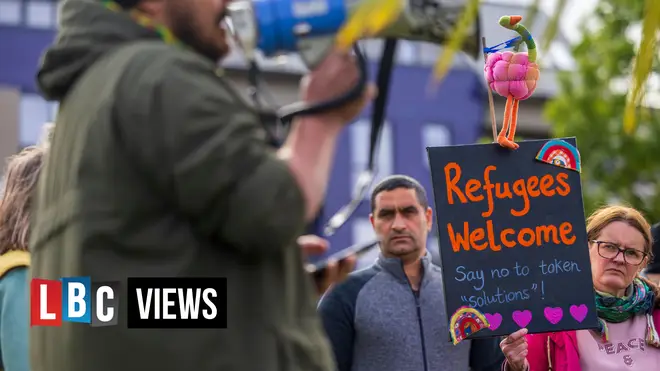
Jonathan Ashworth 10am - 1pm
2 January 2024, 14:18 | Updated: 2 January 2024, 14:21

The Government has wasted little time in 2024 to claim that the backlog of asylum claims has been cleared.
As the Prime Minister is a fan of maths, let’s use a maths-style problem to show why this claim is misleading.
If a cake is cut into three pieces and a Home Secretary eats one of them, has he eaten the cake?
Of course not. Two-thirds of the cake remains. The same is true of the asylum backlog. Here’s how.
In 2022 the Government divided this backlog into two categories – called legacy and flow. In December it promised to clear the legacy cases, as the flow cases increased.
So most of the backlog remains. From a high of 137,000 applications that were awaiting a decision in June last year, 100,000 are still to be decided.
This doesn’t include the concerning figure of 17,000 people whose cases have been “withdrawn” by the Government, people whose whereabouts may not be known.
Of course, it’s fantastic that many people have had their claims decided and can think about moving on with their life.
The Government has shown it can quickly decide cases when it wants to. Had it realised this sooner, the asylum system may not be in such a mess.
But the rapid increase in decision-making has had a vicious sting in its tail.
While Ministers raced to meet their target of clearing part of the backlog, they made a huge number of refugees homeless.
Many of the thousands of people who received a decision were given just seven days to leave Home Office accommodation and find a home and a job, or to apply for benefits.
Mass homelessness was an obvious outcome of ramping-up decision making without a plan of how people would be housed. It was either not considered or, worse, ignored.
Also, quality mustn’t be the victim of speed. Claims must be thoroughly considered, and people given access to legal aid, because getting it wrong can be a matter of life and death.
Problems in the asylum system – the backlog, housing, poverty, and high costs – are caused by a concerted policy of hostility.
It’s a policy that sees human beings who ask for safety as a problem to be deterred, not people to be supported.
But a better system is possible, a system that’s good for refugees and us all. It’s one in which people receive a quick and accurate decision, can work, and can get on with their lives in dignity.